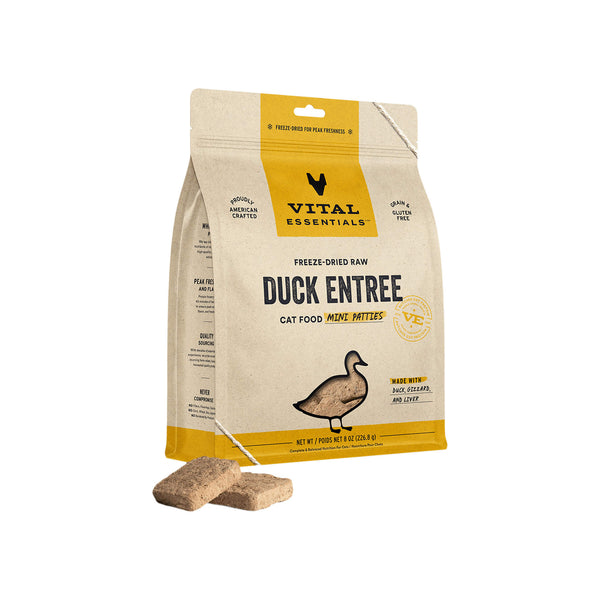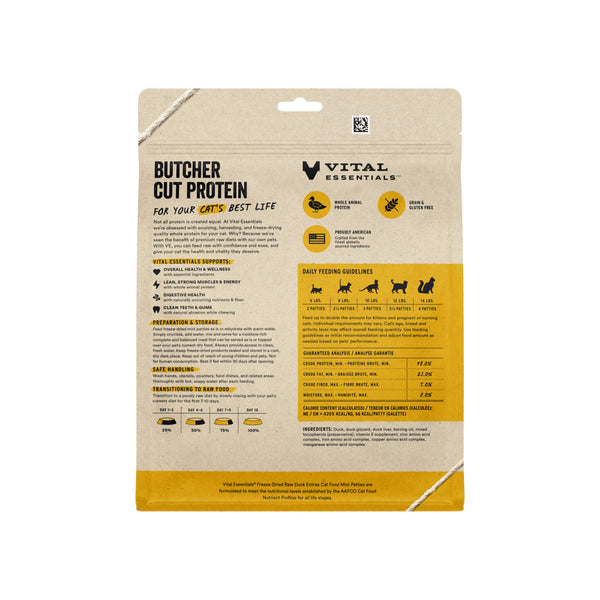Thyroid Problems in Cats: Why Diet & Environment Matter
Written by: Dr. Jean Hofve, Holistic Veterinarian, DVM
Overview of Thyroid Disease in Cats
Feline thyroid disease has risen to epidemic proportions since it was first diagnosed in 1979. It's a worldwide phenomenon, although it’s decidedly worse in the US than other countries.
The disease itself, hyperthyroidism (hyper = too much, thyroid = a hormone-making gland) is seen mostly in older cats – usually in cats aged 10 or older. Thyroid hormone regulates the body’s basic metabolic rate. Too much of it is a lot like drinking too much coffee, it speeds up every reaction in the body. Symptoms are typically related to this excess: excessive hunger, weight loss, restlessness, yowling, vomiting, diarrhea, and heart disease. (Dogs also develop thyroid disease, but in the opposite direction. They are more prone to hypothyroidism, a deficiency of thyroid hormone.)
What Causes Hyperthyroidism in Cats?
Food Causes
Many theories have been put forward to explain the dramatic rise in thyroid disease. Because it affects so many cats, the focus has been on widespread, environmental causes. Studies have found several suspects in cat food:
- One theory implicates the large excess of iodine found in many cat foods. Humans can develop hyperthyroid disease from ingesting too much iodine; might cats do the same? Iodine is difficult and expensive to test for, so pet food makers routinely add plenty of extra, just to make sure that minimums are met. But there aren't specific minimums and maximums being met at this time.
- Several studies found an increased likelihood of developing thyroid disease in cats who eat a lot of canned food. Furthermore, there was more hyperthyroidism in cats that ate fish, liver, or giblet type canned foods. Giblet is another name for organ meats commonly listed on pet food labels as "by-products". High-quality, natural cat foods do not contain by-products.
- Further research suggests that one factor may be the chemical BPA (bisphenol A and similar compounds) found in the lining of pop-top cans that can leach out into the food and cause toxicity. However, there are at least 25 different types of can lining, and no answer on which ones may be harmful. According to the FDA, the low levels of these chemicals found in some cat foods pose no health risk.
Environmental Causes
Recently, the media reported that fire-retardant chemicals known as PBDEs may be a factor in feline hyperthyroidism. The authors of a small study noted that PBDEs were introduced at about the same time hyperthyroidism was first diagnosed in cats. Additionally, the rate of feline hyperthyroidism has roughly paralleled the use of PBDEs in other countries.
The main route of exposure in cats is thought to be the PBDEs contained in carpets, upholstery, mattresses, and electronic equipment, and the dust mites that live in these fabrics. Since cats often sit and sleep on carpets, sofas, chairs, and mattresses, their exposure would naturally be high and prolonged. Normal grooming activity would also cause the cat to ingest a fairly large amount of dust. This may explain the increased risk of hyperthyroidism in indoor cats.
Perhaps the most interesting piece of info to come from a recent study is that PBDEs were also found in cat food. For two major types of PBDEs, high levels were found in canned food, especially in fish- or seafood-based cat foods. High levels of other PBDEs were found in dry cat food.
Age & Other Factors
However, many hyperthyroid cats have never eaten canned food, never gone outside, and have no exposure to any of the other potential causes of the disease. But because hyperthyroidism strikes older cats, it is likely that there are multiple factors that come into play throughout the cat’s life. Put simply, there is no final answer.
Minimize the Risk
So, what can you do to minimize the risk of thyroid problems in cats? Well, it wouldn’t be smart to push your cat outdoors, the dangers outside are far worse, and most of them will kill your cat long before the age of thyroid disease. Ripping out your carpets and throwing away your furniture probably isn’t practical.
Diet does seem to be one area where we can make a difference. However, it is not a good idea to feed only dry food. There are many common health issues associated with dry food: obesity, diabetes, urinary tract disease, constipation, kidney disease, and inflammatory bowel disease. A variety of high-quality, natural foods, including at least 50% canned or fresher food (not dry), is your cat’s best bet for a long and healthy life. For fresher foods without the can, try freeze-dried raw or frozen raw food for cats.
Additional Resources
- Thyroid Disease in Dogs & Cats
- Fifteen Steps to Detox Your Pet
- Naturally Support Your Aging Dog & Cat
- Determining the Best Wet & Dry Food for Dogs & Cats
























